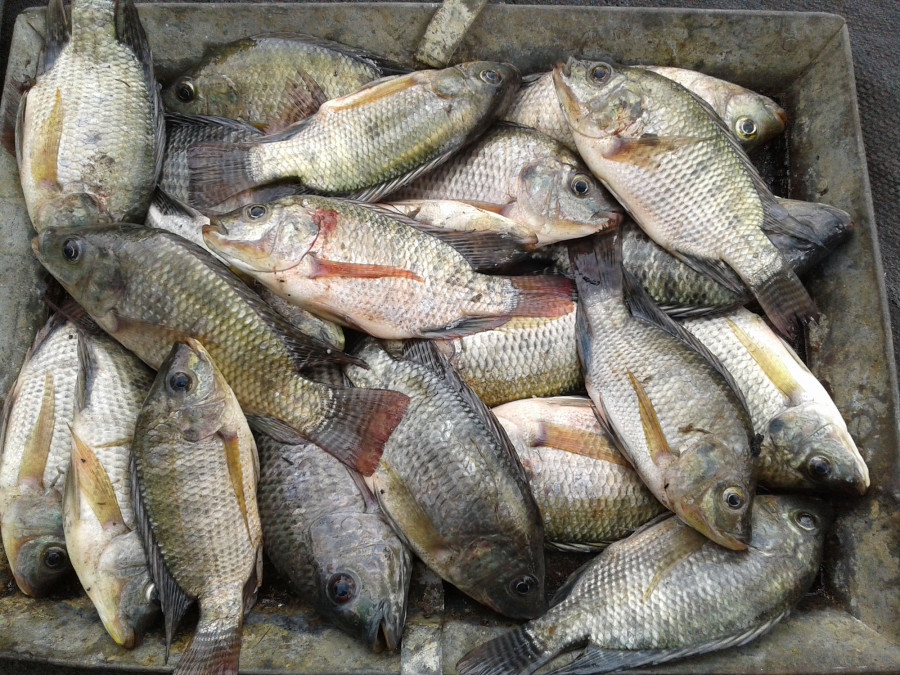Money
Researchers produce monosex population of highly fertile tilapia
The invasive species is a better alternative to carp which is commercially farmed in Nepal.
Ramesh Kumar Paudel
Consumers enjoy eating tilapia, an ambrosial fish with fewer bones; but fishery owners are intimidated by just hearing the name because this invasive fish species multiplies so fast that they cannot farm other fish species in the same water body.
“Consumers choose tilapia over commonly farmed carp; but without suitable farming techniques in place, fisheries have not been able to derive benefits from it,” said Jogendra Chaudary, secretary of the Fisheries Association of Nepal. “Once tilapia multiplies in numbers, all the fish cannot gain weight. Lower weight means lower market value.”
A team of aquaculture researchers from the Agriculture and Forestry University in Rampur has made headway in containing the population of the highly fertile tilapia by producing single-sex fingerlings.
“We focused our study on four techniques of production that will lead to good harvests of tilapia,” said Madhav Kumar Shrestha, a professor at the university. “We have successfully bred mono-sex tilapia which is unable to produce additional fingerlings. It will contain the invasive growth of the fish in ponds.”
According to researchers, the fish which came to Nepal from Thailand in 1985 as a gift is delicious in taste, has fewer bones, sees exceptional physical growth, easily adapts to unfavorable environment and has few predators, making it a highly profitable fish to farm.
The same traits have also made the fish unpopular among fishery operators for lack of proper measures to contain its breeding.
“Tilapia protects its eggs and fingerlings in its jaws, leading to low mortality of new breeds,” said Rahul Ranjan, another researcher involved in the study. “Ignoring such fundamental traits of the fish before letting it breed in Nepal’s ponds has tarnished its reputation as being invasive.”
After successful experiments with monosex breeding, the university has sold 50,000 fingerlings to fisheries around the region.
After the breakthrough, Chaudary, who has been operating a fishery for the last eight years, has decided to raise 7,000 tilapia fingerlings hoping for a good harvest out of the monosex fries. According to him, the farmers will witness large benefits only after the one bad trait of rapid growth of the species is contained.
Also, researchers say that the invasive species is a better alternative to carp which is commercially farmed in Nepal.
“Carp can become fertile only after two years of age, and it must weigh over 2 kg to be able to reproduce successfully. But tilapia can reproduce in just four months,” said Ranjan. “Moreover, it takes eight months for carp to gain 400 grams in weight whereas tilapia can gain the same weight in half the time.”
According to Ranjan, despite superior taste, a market for the domestically cultivable fish remains to see a growth in Nepal where supermarkets are importing the same fish processed and packaged abroad at hefty prices of Rs500-700 per kg. Domestically harvested tilapia is sold in local markets at Rs270 per kg.
Apart from the monosex production, researchers have also suggested other ways to farm the fish. “For a good harvest, tilapia can be farmed along with sahar species which feeds on its fingerlings, or it can be harvested in separate cages for larger and smaller fish with controlled feeding,” said Shrestha.




 13.12°C Kathmandu
13.12°C Kathmandu1.jpg)













